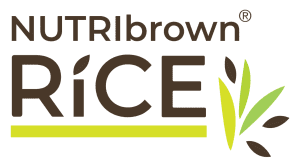“Milk is such a good thing to drink, I wonder why Jason suffers from drinking it”. If you ever had this question, we will solve this for you before starting our topic of the day; the “Jason” here may have lactose intolerance.

What is lactose intolerance?
Lactose is a type of sugar found in most dairy products. People with lactose intolerance will find themselves unable to fully break down or digest lactose. Theoretically, lactose is being digested by an enzyme known as lactase and lactose intolerance occurred when the lactase level in human bodies declines. The treatment options for individuals with lactose intolerance include low-lactose diet and consumption of prebiotics that help in the production of lactase in the colon.
What if they still want to eat dairy product?
Since the body cannot digest lactose like other people, undigested lactose will go into the large intestine to interact with bacteria in the large intestine. The bacteria break down the undigested lactose and build up gases that have impacts on gastrointestinal function. Then symptoms like flatulence, bloating, diarrhea, and abdominal discomfort will come. The onset of these symptoms is significantly associated with the amount of lactose ingested, the presence of visceral hypersensitivity, and a history of gastrointestinal disorders.
Why people develop this?
As mentioned earlier, lactose intolerance is due to the reason of lactase deficiency. When lactase is absent, the undigested lactose is fermented by bacteria and causing gastrointestinal discomfort by releasing hydrogen and methane gases. Lactose intolerance is more prevalent in older people than in babies. Back when we are all baby, we can all digest milk, but the enzyme that digest lactose becomes turned off when we grow into adulthood. Mutation then happens on some humans when they start to domesticate cows for milk and become able to digest lactose even if they are adults.
Food items that should be avoided!
- All kinds of milk: low-fat, condensed, evaporated, and whole
- Whipping cream
- Butter, cream cheese, cottage cheese
- Pancake, waffle, and muffin
- Bakery products that contain the ingredients listed above
Embrace science!
It is the science that enables people to enjoy dairy products! We hope this article sparkles your mind for your good day!

References
- Helen, T. (2012, December 28). An Evolutionary Whodunit: How Did Humans Develop Lactose Tolerance?. Retrieved 18 December 2019, from https://www.npr.org/sections/thesalt/2012/12/27/168144785/an-evolutionary-whodunit-how-did-humans-develop-lactose-tolerance
- Hutyra, T., & Iwańczak, B. (2009). Lactose intolerance: pathophysiology, clinical symptoms, diagnosis and treatment. Polski merkuriusz lekarski: organ Polskiego Towarzystwa Lekarskiego, 26(152), 148-152.
- Jacquelyn, C. (2019, August 2). Everything You Need to Know About Lactose Intolerance. Retrieved 18 December 2019, from https://www.healthline.com/health/lactose-intolerance
- MayoClinic. (2018, April 21). Lactose intolerance Symptoms & causes. Retrieved 18 December 2019, from https://www.mayoclinic.org/diseases-conditions/lactose-intolerance/symptoms-causes/syc-20374232

